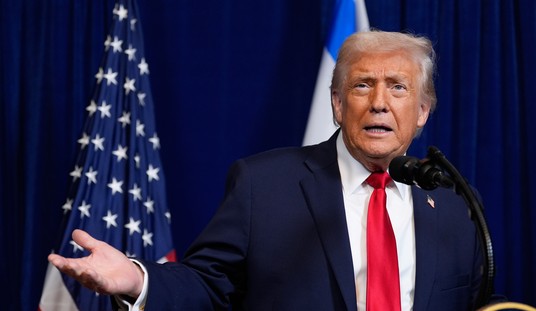There was nowhere to run to yesterday, which is just as well for most investors looking to grow wealth and not chance each turn in the market. The market breadth was a disaster for sure, as 90% of publicly traded stocks tumbled.
On the NYSE, the down volume was ten times greater than the up volume:
- 3.5 billion shares
- 346 million shares
The NASDAQ down volume was 2.1 billion, as it was only 490% greater than the up volume.
Key Technical Levels
When the market is in sell-off mode, it’s almost comical to talk about technology, but I should mention the Dow Jones Industrial Average pierced its 200-day moving average yesterday, and it finished right above it when the closing bell rang.
Ironically, the Dow was the best performing major index yesterday, despite its special exposure to China via Boeing (BA), Caterpillar (CAT), and Apple (AAPL). Moreover, each of these names has issues beyond getting caught in the U.S.-China trade war:
- Boeing must convince travelers it’s safe to get back on 737 Max airplanes
- Apple took an extra hit from the Supreme Court
- Caterpillar’s April retail sales numbers were worrisome
If the Dow stabilizes first, that would be a good sign for the rest of the market.
Fear Gauge
The fear index got to the 2019 high that reached its peak on January 22nd, which some suggest is a contrarian signal. The selling and emotions driving it are overdone. Back then, the spike in the CBOE Volatility Index (VIX) turned out to be a great buy signal.
I’ve never been a great VIX trader. However, in these emotional market periods, I like this gauge to determine when panic might be worse than underlying circumstances.
Recommended
Unicorn Magic Gone
Unicorn: something that is highly desirable but difficult to find or obtain.
One definition of ‘Unicorn’ is being challenged by the stock market as two of the most anticipated unicorns have become unmitigated disasters, and one of them just spent two days as a publicly traded company. Once thought to be highly desirable in investment portfolios, the difficult part has been finding buyers for shares of Lyft (LYFT) and Uber (UBER).
I’m thrilled individual investors shunned Uber and Lyft, as everyone has become hip to these liquidity events for insiders and wealthy Silicon Valley venture capitalists. That’s where things are different than the heady days of the tech and telecom bubble, where there were buyers for every name that became public.
Forget the lack of earnings; back then, some of the hottest offerings had no sales.
I’m not sure when these stocks become buys if ever, but I will keep them on my radar, especially Uber. However, investors should understand some of the biggest success stories in the market stumbled out of the gate, including Facebook (FB). I was reminded of this yesterday when one of the few winners, Match.com (MTCH), closed at a new all-time high.
It Takes A While to Become Magical
On November 19, 2015, two stocks went public to little fanfare.
Match.com (MTCH) priced at the lower end of $12-$14 range. The stock traded slightly under $15.00, then proceeded to drift lower. The company was profitable ($148 million on $888 million in revenue in Fiscal Year (FY) 2014), but the stock faded quickly, changing hands at $9.30 by February 2016. There have been additional hiccups, including the time the Street crushed the stock on word that Amazon (AMZN) wanted to get in the online dating game.
The stock mostly drifted for years before turning higher and soaring like a real unicorn.
Yesterday, the stock closed at $69.00 (+475%) from that initial public offering (IPO) day when there wasn’t much interest.
Square (SQ) also went public on this day seven years after the company’s first round of financing. Unlike current unicorns, which linger privately for more than a decade and raise gazillion dollars before giving the public a chance to participate, Square only had five funding rounds, raising a total of $487.5 million.
When management priced the IPO, the $2.9 billion valuations was 50% less than the last round of private financing.
The stock popped on the first day of trading from its IPO price of $9.00 to $15.00 before closing near $13.00. By January 2016, the stock was changing hands below the IPO price. Like Match.com, this stock mostly drifted until breaking out in February 2017. For the most part, it’s been off to the races since.
The Moral of the Story
If you didn’t buy these IPOs, pat yourself on the back; but don’t put them on a shelf and forget they exist because I’m sure there could come a time, maybe years from now, where these unicorns will fly again.
Portfolio Approach
We closed out another position yesterday, which I wanted to hold longer, but I didn’t want to squander a double-digit gain. The model portfolio has cash, and you should have a lot of cash as well.
Communication Services | Consumer Discretionary | Consumer Staples |
1 | 4 | 1 |
Energy | Financials | Healthcare |
1 | 1 | 1 |
Industrial | Materials | Real Estate |
2 | 3 | 0 |
Technology | Utilities | Cash |
2 | 0 | 4 |
Today’s Session
We are going to win the Trade War if we fight like we have the number one economy in the world, rule of law, and the world’s reserve currency.
Economic Footing | China | America |
Per Capita GDP | $7,329 | $53,128 |
GDP 2018 | $14.1 trillion | $20.5 trillion |
GDP Hit | 0.5% | 0.25% |
GDP Hit worst case | 1.0% | 0.50% |
Market since April 22 | -11.8% | -4.5% |
Market since June 2015 | -44% | +41% |

























Join the conversation as a VIP Member